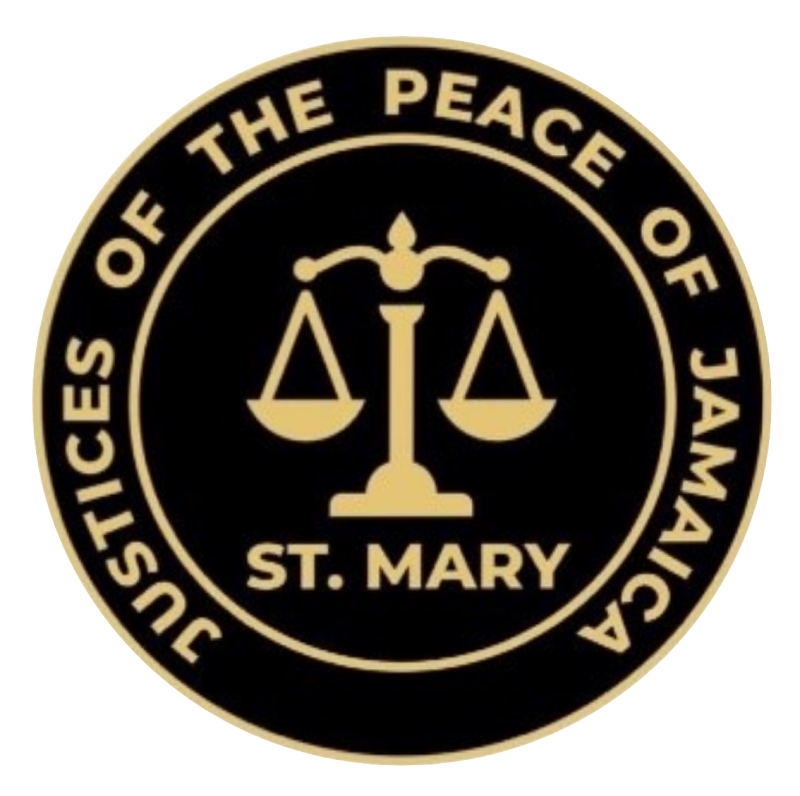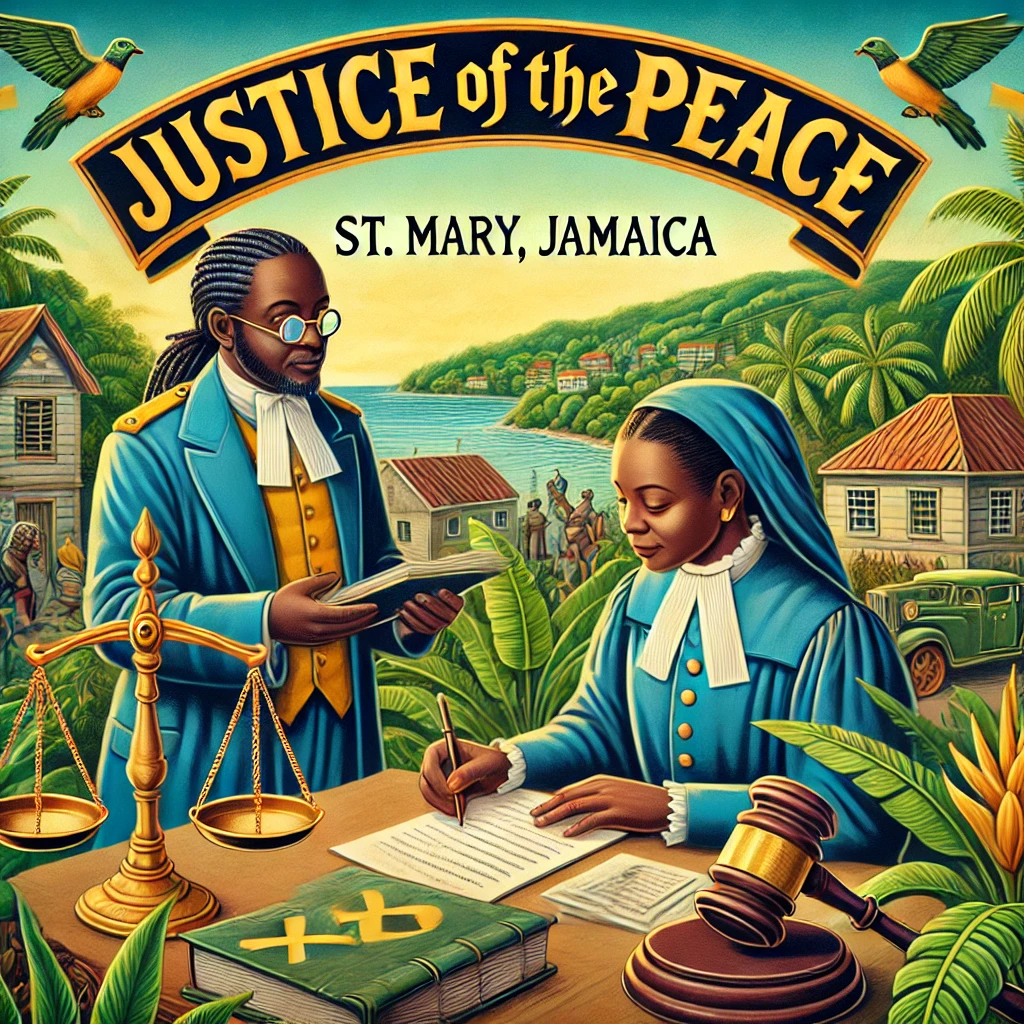The history of the Justice of the Peace (JP) in St. Mary, Jamaica, aligns with the broader history of JPs across the island, reflecting the integration of local governance and justice into the community’s fabric. However, the unique social, agricultural, and cultural context of St. Mary adds distinct characteristics to this role.
Colonial Era (17th–19th Century)
- Introduction to St. Mary: Following the British conquest of Jamaica in 1655, the parish of St. Mary, like other parts of the island, adopted the British model of local justice. JPs, often landowners or planters, became critical figures in maintaining law and order in this agriculturally rich parish.
- Agricultural Influence: St. Mary, known for its sugar plantations, depended heavily on enslaved labor during the 18th century. JPs in the parish were responsible for adjudicating disputes, managing plantation-related legal matters, and overseeing labor relations, often serving the interests of the plantation economy.
Post-Emancipation Era (19th Century)
- Role in Transition: After the abolition of slavery in 1834, JPs in St. Mary played a pivotal role in the transition to free labor. They mediated conflicts between former slaves and landowners, ensuring stability during this challenging period.
- Community Integration: As freed people established settlements and small farms in St. Mary, JPs became more involved in local disputes, property matters, and land agreements.
20th Century Developments
- Expanding Responsibilities: By the early 20th century, JPs in St. Mary took on broader roles, including witnessing documents, certifying legal transactions, and addressing community grievances.
- Community Justice: St. Mary’s reliance on agriculture, including bananas and coconuts, often saw JPs mediating issues related to trade, land, and cooperative farming, reflecting the parish’s evolving economy.
Post-Independence Role (1962–Present)
- Modern Governance: After Jamaica gained independence, the role of JPs in St. Mary became more structured under national laws, such as the Justices of the Peace Act. This included formal training and clear guidelines for appointment and duties.
- Focus on Accessibility: In rural areas of St. Mary, where access to formal courts might be limited, JPs provided essential services like certifying documents, mediating disputes, and supporting restorative justice initiatives.
- Community Leadership: St. Mary’s JPs are often prominent community figures dedicated to volunteerism, representing the parish’s deep sense of community spirit and mutual support.
Contemporary Significance
Today, Justices of the Peace in St. Mary continue to serve as trusted pillars of local governance. Their work embodies the parish’s blend of historical legacy and modern needs, providing accessible justice and fostering trust in the legal system. The lush, rural setting of St. Mary underscores the importance of their role in bridging the gap between formal justice and community-based problem-solving.
Legacy and Contribution
The history of JPs in St. Mary reflects the parish’s unique blend of cultural heritage, agricultural prominence, and community resilience. Their enduring role highlights the importance of localized justice in preserving peace and fostering development in Jamaica’s rural heartlands.



Leave a Reply